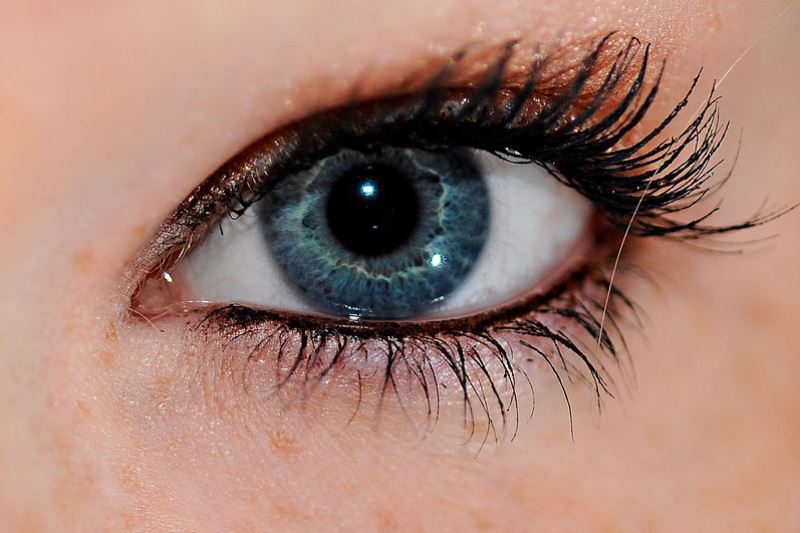A clinic in California is testing a laser procedure that eliminates pigment in the patient’s eyes, turning them blue.
(Photo: Garretttaggs55, CC BY-SA 3.0)
Ever been stymied in a desire to bat your baby blues by the fact that your eyes aren’t actually blue? An experimental new procedure could see you permanently change your peepers’ hue.
Strōma Medical Corporation, based out of Laguna Beach, California, claims to have invented a new laser eye surgery technique that eliminates the pigment from the patient’s eye.
Here’s how it works. In darker, warm eye colours — browns and black — the upper layer of the iris (the stroma) contains high concentrations of melanin, the natural pigment that effects skin colour, hair colour and eye colour.
However, in blue and green eyes, the stroma contains very little melanin — the blue colour is caused by a light-scattering effect called the Tyndall effect, similar to the Rayleigh scattering effect that makes the sky appear blue. Blue-coloured eyes are actually eyes without pigment.
Strōma’s technique uses a laser to disrupt the melanin in the stroma of the iris. The patient watches a small animation about a foot from their face, their head stabilised, while the laser does its work, a process that takes, in all, around 30 seconds per eye.
This causes the body to begin its own natural process of eliminating the pigment from the eye over several weeks following the treatment. The result? Sky blue eyes — or so the company claims. The procedure is not yet available to the public.
“We have completed a preliminary human study to test the safety and efficacy of the procedure and using what we’ve learned to design and build our next-generation device. Our next steps will be to complete our pilot and pivotal human clinical studies using our new device,” the Strōma website reads.
“Our plan is to treat about 20 patients in our initial pilot clinical study. Following the successful completion of that pilot study we will treat about 100 patients in multiple countries and follow them for a predetermined length of time.”
Only when governmental regulatory bodies are comfortable that the process is safe will the company start taking patients, at a price tag of around $5,000 — and, of course, the team expects that the procedure will be available outside the US first, due to the cost and stringent regulations of obtaining approval.
The team is also careful to note that it has worked hard to make sure pigmentary glaucoma — whereby pieces of pigment from the iris are carried into the anterior chamber, causing pressure inside the eye and, if untreated, glaucoma — does not result from its treatment.
The treatment could also be used to correct — or induce — heterochromia, where the pigmentation in the eyes is uneven.
(Photo: Aapo Haapanen, CC BY-SA 2.0)
“Some physicians on blogs and elsewhere have suggested that the Strōma procedure could cause pigmentary glaucoma,” the team said. “We were concerned about this issue right from the start, so it was the first issue we tested and measured in our initial pre-clinical and clinical studies. Thus far, pigmentary glaucoma has not proved to be a problem in our pre-clinical or clinical studies.”
This is because the iris has a second layer of pigment — the epithelium, located behind the iris. Pigmentary glaucoma occurs when pigment abrades off this back layer of the iris. Because the Strōma treatment only effects the upper layer of pigment — the stroma — and because it is removed via a laser-initiated process rather than abrasion — the team believes that it won’t pose a glaucoma risk.
What is less clear is whether the laser itself is safe. The Q-Switched Nd:YAG infrared laser is often used for treating skin pigmentation; but Q-switched pulses are relatively long, which means there may be enough time for heat transfer into the iris, which could in turn cause damage. We have contacted Strōma about this issue and will update when we receive a reply.
Another thing to take into account is that blue eyes have a higher prevalence of age-related macular degeneration, due to the lack of protective melanin — so if you have darker eyes, you have a very good reason to hang onto them.
The company is currently seeking patients for the clinical trials in Costa Rica, Mexico, the Philippines, London, Paris, Toronto and Argentina. You can find out more and sign up on the Strōma website.
(Source: CNET)


